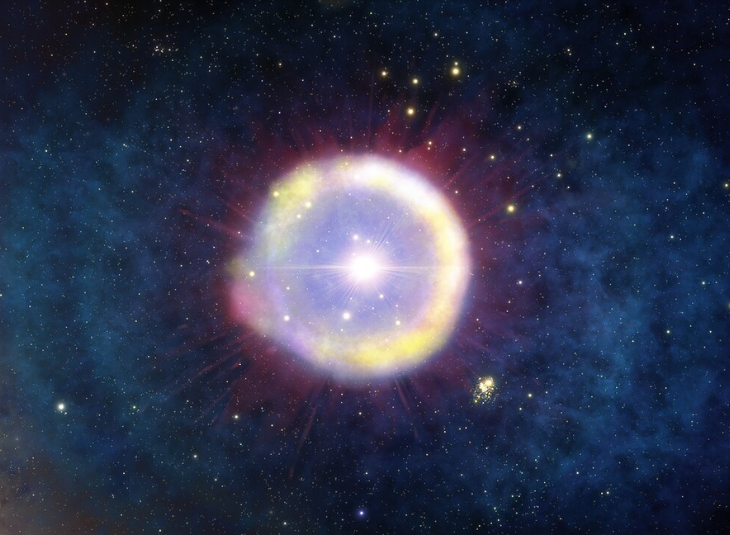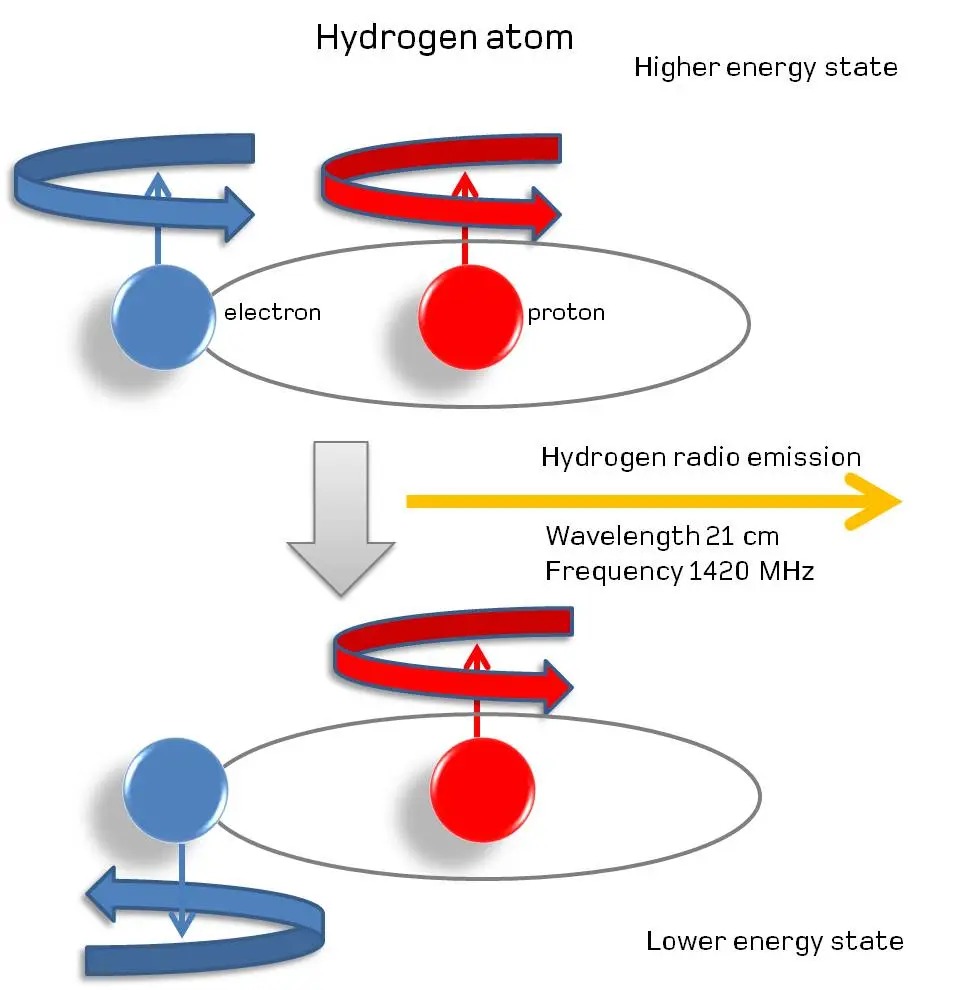A cosmic signal from the early universe could reveal what the first stars were like
The study, published in Nature Astronomy, shows that it will be possible to determine the masses of the first stars formed after the Big Bang
The Instituto de Astrofísica de Andalucía (IAA-CSIC) has analyzed how instruments like the REACH antenna and the SKA radio telescope may help reconstruct the nature of these primordial celestial bodies
Understanding how the universe transitioned from darkness to light with the formation of the first stars and galaxies marks a turning point in cosmic evolution, known as the Cosmic Dawn. However, even the most powerful telescopes cannot observe these first stars directly, making it one of the greatest challenges in astronomy to determine their properties.
Now, an international research team involving the Instituto de Astrofísica de Andalucía (IAA-CSIC) has shown that it will be possible to determine the mass distribution of the first stars.
“Since these stars formed more than 13 billion years ago, they have long completed their life cycles and are no longer directly observable. That’s why we used an indirect signal in this study to investigate their mass distribution: the 21-centimeter line,” explains Giovanni Mirouh, researcher at IAA-CSIC and co-author of the study.

A Population III star field, composed only of hydrogen and helium (no metals), as it would have appeared just 100 million years after the Big Bang. Credit: Credit: NOIRLab/NSF/AURA/J. da Silva/Spaceengine/M. Zamani
The 21 cm line is a faint but detectable radio signal emitted by neutral hydrogen that contains valuable information about the early universe. By analyzing how the first stars and their remnants affected this signal, the team has shown that next-generation radio telescopes will help us understand how the universe evolved from a nearly uniform cloud of hydrogen to the complex cosmos we observe today. The results have been published in Nature Astronomy.
“This is a unique opportunity to understand how the first light of the universe emerged from darkness,” says Anastasia Fialkov, co-author of the study and researcher at the Institute of Astronomy, University of Cambridge, where she leads the group behind this work. “The transition from a cold, dark universe to one filled with stars is a story we are only beginning to uncover.”
CAN WE RECONSTRUCT THE UNIVERSE’S STELLAR PAST?
This study set out to decode the nature of the first stars by simulating different stellar populations, that is, groups of stars with various initial properties—especially their masses—and including binary systems, where two stars orbit each other.
In some of these binary systems, one star can end its life as a black hole or neutron star and begin to accrete material from its companion. This process emits high-energy X-rays, which can ionize the surrounding interstellar hydrogen—altering its atomic structure. In turn, this modified hydrogen affects the 21 cm signal it emits.
“The most interesting part is that the X-rays alter the signal, so by studying how it changes, we can gain insights into what those primordial stars were like,” says Mirouh (IAA-CSIC).
The Instituto de Astrofísica de Andalucía (IAA-CSIC) contributed to this work through the participation of Giovanni Mirouh, who developed the models of metal-free stars—composed only of hydrogen and helium—which formed the basis of the stellar population simulations. These models cover a wide range of masses, up to 1000 times the mass of the Sun.
“This posed a challenge due to the extreme nature of the most massive stars, which live for very short periods and have much more inflated structures compared to stars we observe today,” explains the IAA-CSIC researcher.
Mirouh also contributed to the development of the stellar population code, enabling stellar parameters to be derived directly from physical models rather than relying on outdated formulas that are ill-suited for such stars.

When a neutral hydrogen atom is formed, its electron tends to be placed in the lowest energy state. In that state, the electron and proton can have their “spins” (or spins) aligned or in opposite directions. If they are aligned, the atom is in a slightly more energetic state. Sooner or later, the electron will switch to the lower energy configuration - with opposite spins - emitting a very characteristic radio wave: the so-called 21-centimeter line (or 1420 MHz). This signal is very weak, allowing us to detect large accumulations of neutral hydrogen even before the first stars form, and thus to study the universe in its earliest stages. Credit: SKAO organisation
REACH AND SKAO: PROBING THE EARLY UNIVERSE
Another key aspect of the study was to assess the potential of instruments like REACH and SKA to detect changes in the 21 cm signal—changes that would make it possible to reconstruct the properties of the first stars.
“The good news is: yes, it is possible. Our results show that with enough observation time, or sufficient sensitivity, we could distinguish between different scenarios—especially if we combine data from both instruments,” says Mirouh (IAA-CSIC).
REACH (Radio Experiment for the Analysis of Cosmic Hydrogen) is a ground-based radio antenna designed to capture the faint 21 cm signal from primordial hydrogen. While still in its calibration phase, it is expected to provide key insights into the Cosmic Dawn and the Epoch of Reionization, when the first stars transformed the universe’s hydrogen landscape.
Meanwhile, the Square Kilometre Array Observatory (SKAO)—with Spain’s participation coordinated by the Instituto de Astrofísica de Andalucía (IAA-CSIC)—will be the world’s largest radio telescope, made up of thousands of antennas spread across South Africa and Australia. It will be capable of mapping fluctuations in the 21 cm line across vast regions of the sky, allowing scientists to study in detail how the universe’s first structures evolved.
Both projects are essential for investigating the masses, luminosities, and distribution of the first stars. Although these instruments won’t be able to observe individual stars, they will provide valuable information on entire populations, X-ray binary systems, and early galaxies.
“I find it fascinating that the first stars formed after the Big Bang shaped the universe in ways we can still measure today,” says Giovanni Mirouh (IAA-CSIC), and concludes: “These stars were born billions of years ago and are long gone, yet we can infer the masses they had at birth from a single measurement using cutting-edge instruments.”
- ‘Determination of the mass distribution of the first stars from the 21-cm signal’
- https://www.nature.com/articles/s41550-025-02575-x
- Giovanni Mirouh - gmirouh@iaa.csic.es
- Instituto de Astrofísica de Andalucía (IAA-CSIC)
- Unidad de Divulgación y Comunicación
- Amanda López – alm@iaa.es
- Emilio García – garcia@iaa.es - 649 407 445 (vía whatssap)
- Celia Navas - navas@iaa.es
- https://www.iaa.csic.es
- https://divulgacion.iaa.csic.es

